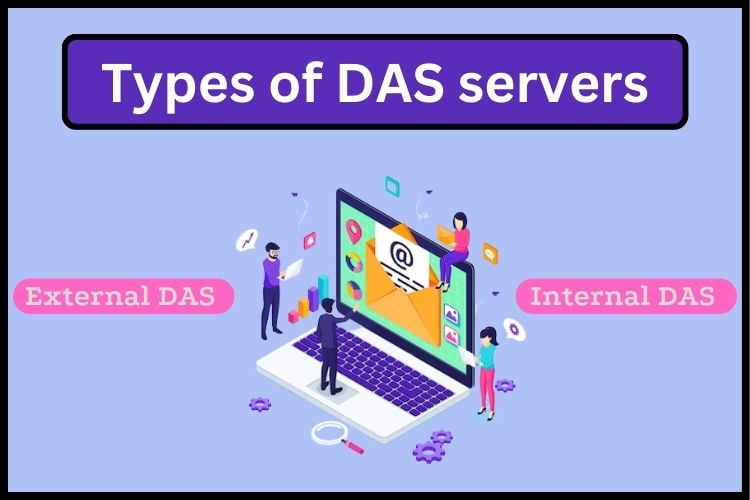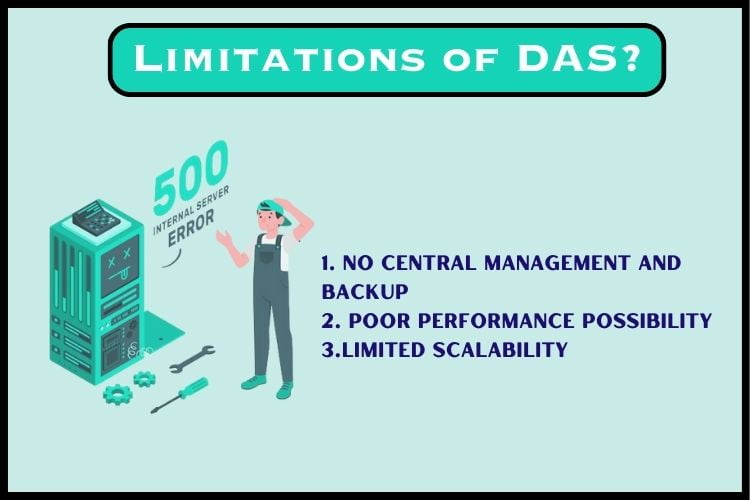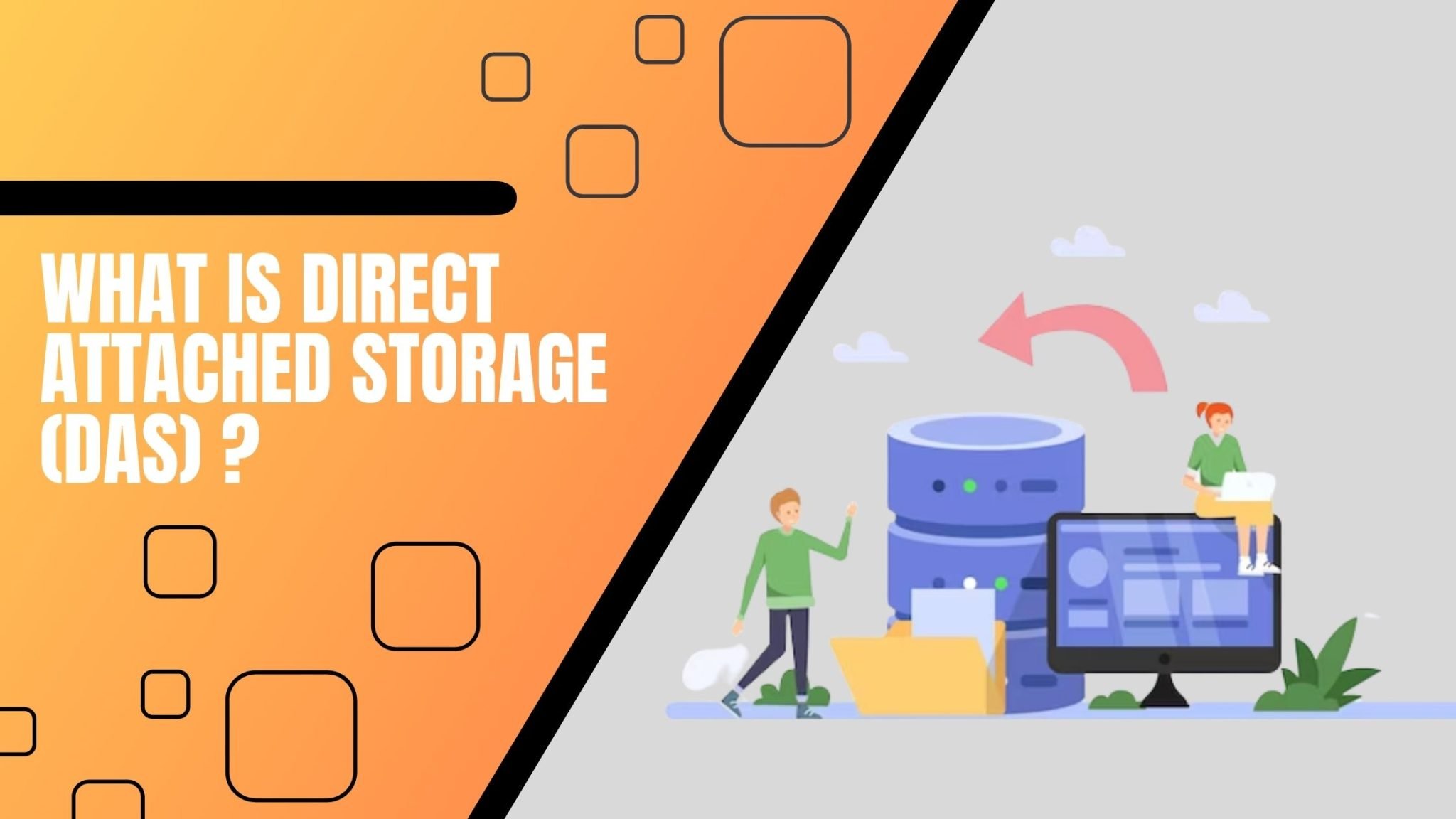Table of Contents
Direct Attached Storage (DAS) is a storage architecture where storage devices are directly connected to a single server or computer without relying on a network. It offers fast data transfer and low latency, making it suitable for localized storage needs. DAS is cost-effective, easy to manage, and remains important for applications requiring quick and direct data access.
What are the uses of DAS?
Direct-Attached Storage (DAS) serves various essential purposes in modern computing environments. One of its primary uses is providing local storage directly connected to servers or computers, offering high-speed data access and low latency. DAS is commonly employed in scenarios where localized storage is sufficient and cost-effective, such as small businesses or individual workstations.
Additionally, DAS can enhance performance for applications requiring quick data retrieval, like video editing or real-time data processing. Moreover, DAS finds applications in remote desktop environments, where it allows storing user data and files directly on the remote server accessed through technologies like Remote Desktop Protocol (RDP). This setup ensures efficient data management and faster file transfers during remote sessions.
How does a DAS server work?
A Direct-Attached Storage (DAS) server operates on a simple yet efficient principle. When a DAS is implemented, storage devices such as hard disk drives (HDDs) or solid-state drives (SSDs) are directly connected to the server using interfaces like Serial Advanced Technology Attachment (SATA) or Small Computer System Interface (SCSI). Once connected, the server gains immediate access to the storage resources available on these devices
As data is stored and retrieved directly from the locally attached storage, it results in fast data transfer speeds and low latency. This direct link between the server and storage devices eliminates the need for network intermediaries, making DAS an ideal solution for applications demanding quick and direct data access.

What are the types of DAS servers ?
There are two types of DAS servers, each with distinct characteristics and use cases. They are as follows:
1. Internal DAS
Internal DAS refers to a DAS where the storage device is connected to the server or PC internally by the HBA. For high-speed bus communication over a short distance in this DAS, HBA is used.
2. External DAS
External DAS refers to a DAS where the external storage device is linked to the server directly and without the need of any other devices. FCP and SCSI are the protocols that serve as the interface between the server and the storage device in this form of DAS.
What are the benefits of DAS?
The advantages of Direct Attached Storage (DAS) are numerous, making it one of the best storage solutions. Some of these benefits include high-speed data access, low latency, cost-effectiveness, and ease of setup and management. DAS ensures reliable and direct storage connectivity, ideal for applications requiring quick data retrieval and localized storage needs. Some additional benefits include,
1. High performance
Because it is connected directly to the computer that often needs it, direct attached storage provides quick access to data. Direct connected storage is not immediately affected by network connection or other problems. However, network circumstances will apply to a computer trying to access data from a direct attached service that is linked to a storage server through a network.
2. Easy to setup and configure
Normally, computers come with internal, directly connected storage that is immediately usable. The majority of external network attached storage devices are “plug and play,” or operational as soon as they are connected to an appropriate connection, such a USB port.
3. Low cost
The sole components of directly connected storage are the storage device itself and any drive enclosures. As a result, it can be far less expensive than alternative storage options that depend on hardware and software to operate and control the storage devices.

What are the limitations of DAS?
Despite the advantages of Direct Attached Storage (DAS), there are some limitations to consider. One of the drawbacks is limited scalability, as DAS is typically confined to a single server or computer. Additionally, DAS may result in underutilized storage resources and lack the flexibility of shared storage solutions found in networked systems.
Careful consideration of the specific requirements is necessary to determine if DAS is the best fit for a particular use case. Some of the limitations are as follows
1. No central management and backup
Growing organizations may experience difficulties ensuring that the data stored on DAS is accessible and backed up, even while it is not a concern for individuals or small groups of PCs utilizing DAS. It becomes more difficult and expensive to maintain availability and dependability than to set up redundancy and backups on networked storage devices.
2. Poor performance possibility
Data sharing with other computers on a network using a DAS attached to a PC might be slow. This is a result of performance being dependent on the host PC’s resources. When DAS is linked to potent storage-focused servers, the problem is less common.
3. Limited scalability
DAS are difficult to scale since the quantity of internal drive bays, the accessibility of external ports, and the capacity of external DAS are all limited, unlike software-defined storage, which offers limitless storage. The host computer might need to be turned off during the upgrade if internal DAS has to be updated.
What are the Performance differences and use cases?
Because hardware and its settings will always have an impact on performance, it is impossible to make generalizations regarding the performance differences between SAN, NAS, and DAS.
For instance, a DAS setup using many high-speed SAS discs in the proper RAID configuration will perform far better than a DAS arrangement using a single 5400 rpm IDE drive. But it is feasible to draw some broad generalizations-
a) SAN
Storage area network systems transport block-level data between servers and pricey, but fully functional, SAN storage arrays via a dedicated high speed data network (often based on fiber channel or iSCSI). Deduplication, compression, encryption, and different availability services like backup and site mirroring are among the characteristics that SAN arrays provide.
b) NAS
In order to provide networked access to these devices as well as access control (often through Active Directory), network attached storage requires computer hardware (typically a storage appliance), storage devices like hard drives, and software that manages the storage devices, sets up data backups and redundancy (typically through some RAID configuration).
c) DAS
Because the data is stored close to the system’s RAM and CPU, direct connected storage often provides the computer system to which it is directly attached with great storage performance. Additionally, it may benefit from fast computer bus connections like SAS and SATA and is not impacted by network congestion.
Conclusion
Direct Attached Storage (DAS) offers high-speed data access and low latency, making it ideal for localized storage needs and applications requiring quick data retrieval. While it provides advantages like cost-effectiveness and ease of setup, DAS has limitations concerning scalability and centralized management. At Serverstack, we offer various DAS configurations tailored to specific requirements, ensuring reliable and efficient data management for businesses seeking optimal storage solutions.
Frequently Asked Questions
Q1. Can DAS be used in conjunction with other storage solutions like SAN (Storage Area Network)?
Yes, DAS can be combined with SAN, allowing fast access and scalability for shared storage needs.
Q2. How do I determine if Direct Attached Storage is the right choice for my business's data storage needs?
Consider organization size, data storage scale, and performance requirements to assess if DAS is suitable for localized storage needs.
Q3. Are there any best practices for setting up and managing DAS to ensure optimal performance and data security?
Opt for high-performance storage devices, set up redundancy, monitor performance, and implement security measures for optimal DAS setup and management.







